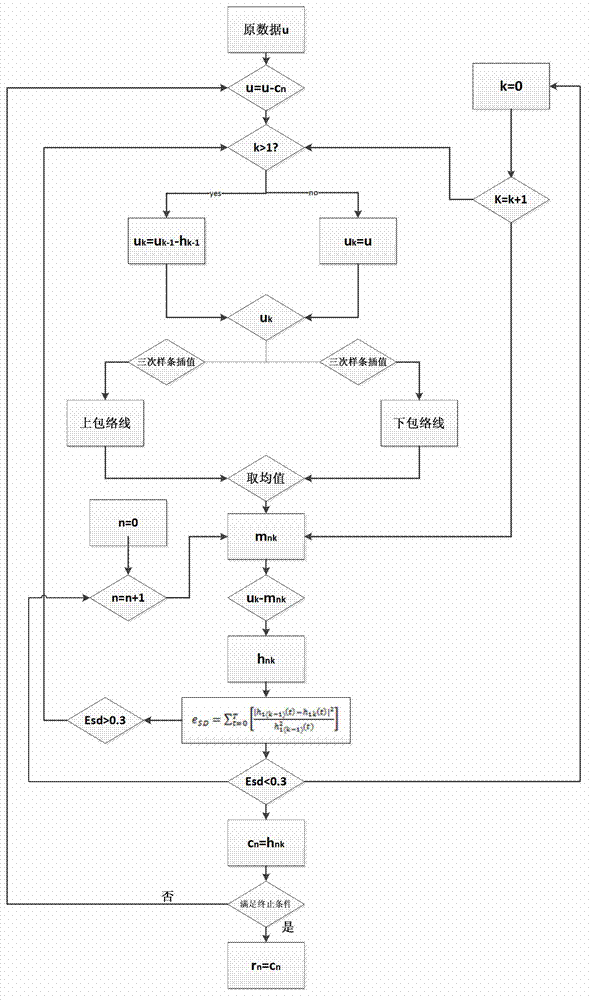Wind farm time-frequency domain modeling method based on empirical mode decomposition (EMD)
A technology of empirical mode decomposition and modeling method, which is applied in the field of wind farm grid-connected impact analysis, and can solve problems such as the inability to reproduce the output power fluctuation characteristics, the disadvantage of wind farm grid-connected impact analysis, and the difficulty in finding corresponding relationships.
- Summary
- Abstract
- Description
- Claims
- Application Information
AI Technical Summary
Problems solved by technology
Method used
Image
Examples
Embodiment Construction
[0047] The present invention will be further described below in conjunction with the accompanying drawings and specific embodiments.
[0048] The concrete steps of modeling method of the present invention are as follows:
[0049] 1. Acquisition of active power data in wind farms
[0050] Collect the output power Pwind_i(t) of each unit in a wind farm in a wind farm and sum them up. The result is the total output power of the wind farm which is:
[0051] P win d j ( t ) = Σ i = 1 n P win d i ( t ) - - - ( 1 ) ...
PUM
 Login to View More
Login to View More Abstract
Description
Claims
Application Information
 Login to View More
Login to View More - R&D
- Intellectual Property
- Life Sciences
- Materials
- Tech Scout
- Unparalleled Data Quality
- Higher Quality Content
- 60% Fewer Hallucinations
Browse by: Latest US Patents, China's latest patents, Technical Efficacy Thesaurus, Application Domain, Technology Topic, Popular Technical Reports.
© 2025 PatSnap. All rights reserved.Legal|Privacy policy|Modern Slavery Act Transparency Statement|Sitemap|About US| Contact US: help@patsnap.com



